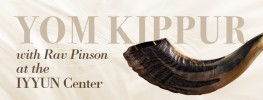There is a custom that has been practiced by many Jews throughout the entire world for generations, a ceremony celebrating a boy’s first haircut. Essentially, the primary purpose of the haircut is to reveal the peyos/sidelocks.
Every age, every movement of change is marked by a ceremony, the reason being, to show support for the one undergoing the transition, as well as to facilitate a smoother, less turbulent transition.
The Yiddish name for this ceremony is Upsherin, a phrase that comes from the German word sheren/shear and auf/off. In Hebrew, this ceremony is called Tisporet.
In the Torah, we find that Avraham/Abraham “made a great feast the same day that Yitzchak/Isaac was weaned†(Bereishis 21:8). The great 11th century commentator, R. Shlomo Yitzchaki, otherwise known as Rashi, writes that this was when Yitzchak turned two years of age, entering the age of three. Perhaps this is in commemoration of a transitional moment in a child’s maturation.
Clearly, a boy at the age of three passes through a period of major transformation, the journey from babyhood to childhood. During this time, he is weaned from completely depending on the mother to functioning as an independent being.
Drawing a parallel between human beings and their environment, a correlation arises between humans and trees. According to Torah law (Vayikra 19:23), we may not indulge in the fruit of trees within the first three years they were planted. This injunction is referred to as the laws of orlah, literally translated as concealment. Similarly, the child’s hair should be left alone for the first three years of life, and only afterward can it be cut.
Every age, every movement of change is marked by a ceremony, the reason being, to show support for the one undergoing the transition, as well as to facilitate a smoother, less turbulent transition.
Children moving from what can be called a pre-personal stage to a personal stage, going from non-self awareness to self-awareness, become very protective of both their space and their ego. When a child first discovers his own separateness from the mother, that he is a distinct person with an individual body and has unique wants and desires, this awareness can be as frightening as it is empowering. The process of separation individuation, as some psychologists refer to it, begins at an early age of life, and shows up with a kind of vengeance in the second year of life, the terrible twos, as they are known.
When the child nears his third year of life, on a developmental level, he passes through a transitional time. Going from baby armed with diapers and bottles to boy, from being sheltered in the comfort of the home to stepping out into school, from being protected by the immediate family to being surrounded by friends. Simply, the baby is maturing and beginning a new phase in growing up, going from an insular protected life to a life less sheltered. Similar to the fruit of the tree after its third year, the child’s fruit, the personality, is to be shared and appreciated by others.
To mark this advancement into maturity and to make it memorable, an Upsherin is celebrated. With joy and various intriguing customs, this occasion is meant to excite the child and to infuse him with enthusiasm for his new stage in life.







